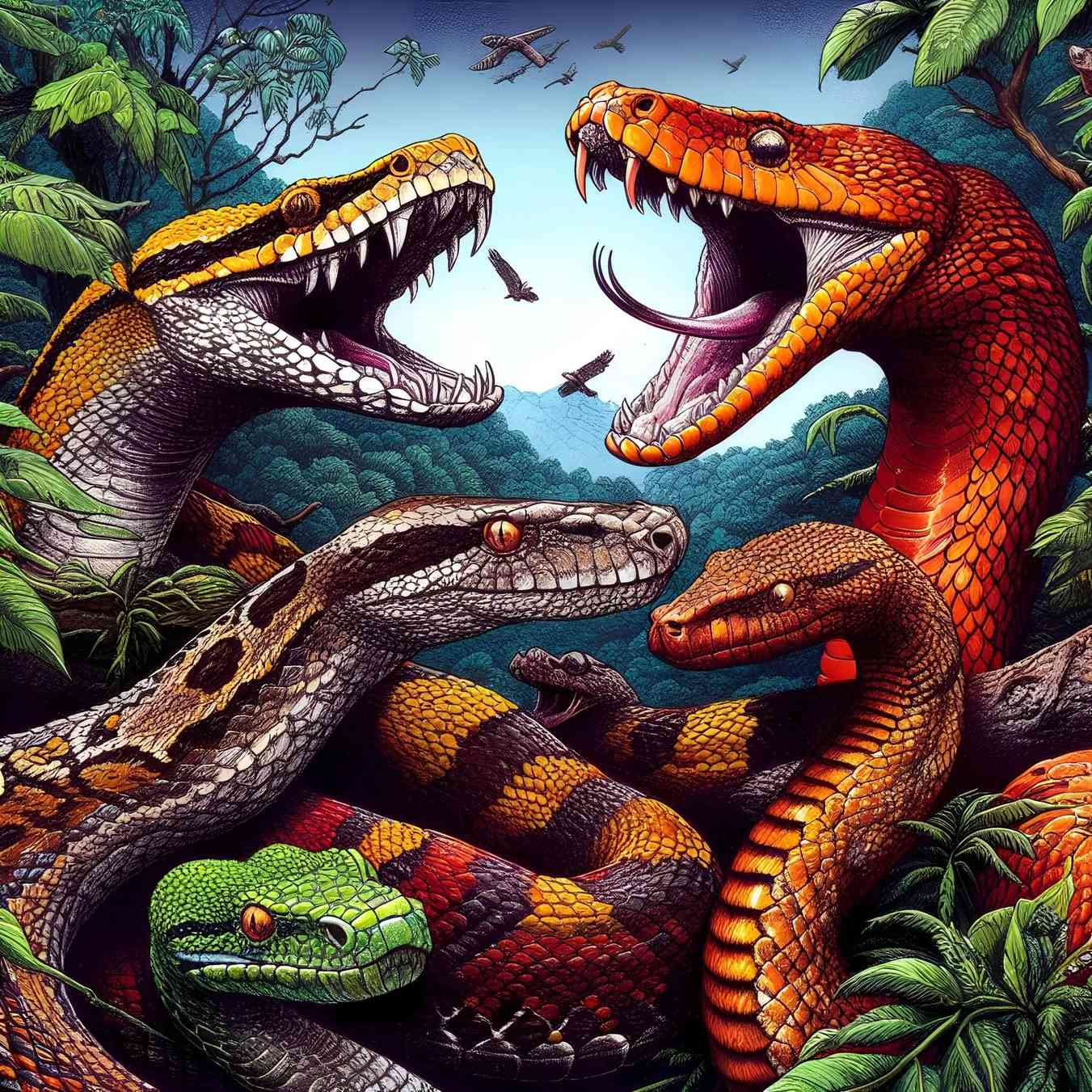In the world, there are many species of snakes capable of killing a human. This article brings you the 10 deadliest snakes based on an analysis of overall toxicity and the potential for human fatality in the absence of medicines or appropriate antivenoms. Who are the deadliest snakes in the world? We present to you the ten most dangerous and deadliest snakes on Earth, from the black mamba to the inland taipan.
- Reticulated Python (Malayopython Reticulatus)
- Green Anaconda (Eunectes Murinus)
- Mojave Rattlesnake (Crotalus Scutulatus)
- King Cobra (Ophiophagus Hannah)
- Russell’s Viper (Daboia Russelii)
- Hydrophis Belcheri (Faint-Banded Sea Snake or Belcher’s Sea Snake)
- Eastern Brown Snake (Pseudonaja Textilis)
- Common Death Adder (Acanthophis Antarcticus)
- Inland Taipan (Oxyuranus Microlepidotus)
- Black Mamba (Dendroaspis Polylepis)
- A snake is considered deadly due to the potency and toxicity of its venom. Some snakes have venom that can cause paralysis (neurotoxic venom), while others have venom that disrupts blood clotting and damages tissues (hemotoxic venom).
- The green anaconda (Eunectes murinus) holds the title of the largest and one of the strongest snakes globally, known for its powerful constriction.
Reticulated Python (Malayopython Reticulatus)
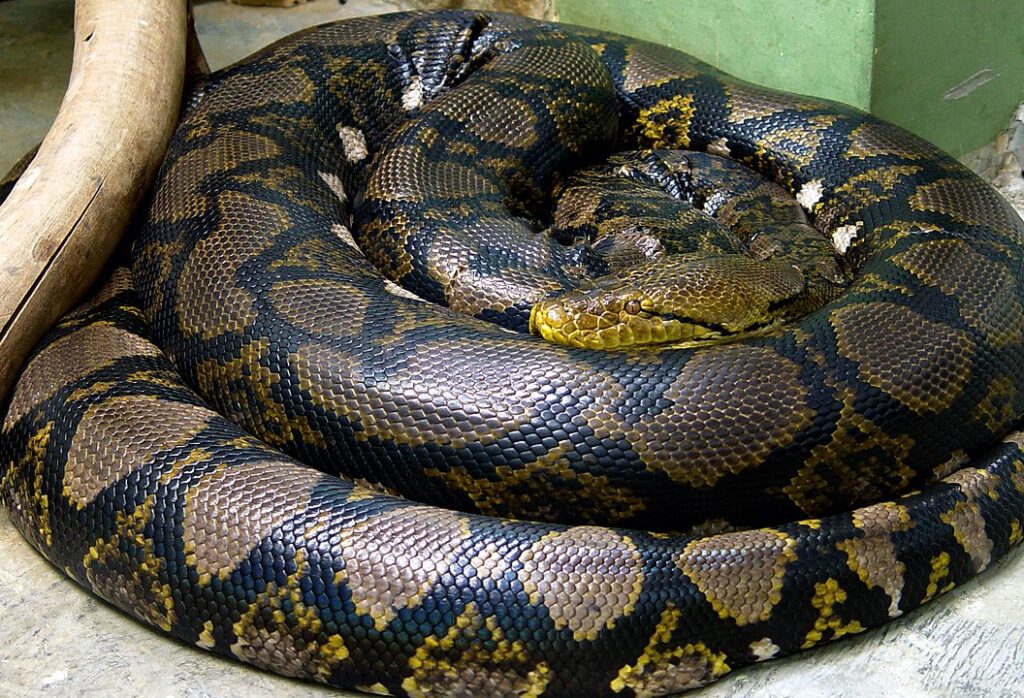
This is the species of snake that is the longest in the world. Originating from Southeast Asia, they can measure up to 8 to 10 meters(26 to 32 feet) in length and weigh up to 160 kg (350 lbs). Devoid of venom, they belong to the constrictor family. The python strangles its prey before swallowing it whole. Its diet consists of monkeys and other small mammals.
Although attacks on humans are relatively uncommon, it is noteworthy that this snake occasionally eats people and domestic animals in Indonesia. Typically, this giant resides in forests and swamps, but due to deforestation, it is increasingly found near villages and fields.
- Among the world’s largest snakes, they can exceed 26 to 32 feet in length.
- Distinguished by their intricate, net-like pattern on scales.
- Found in Southeast Asia, primarily in rainforests and swamps.
Green Anaconda (Eunectes Murinus)
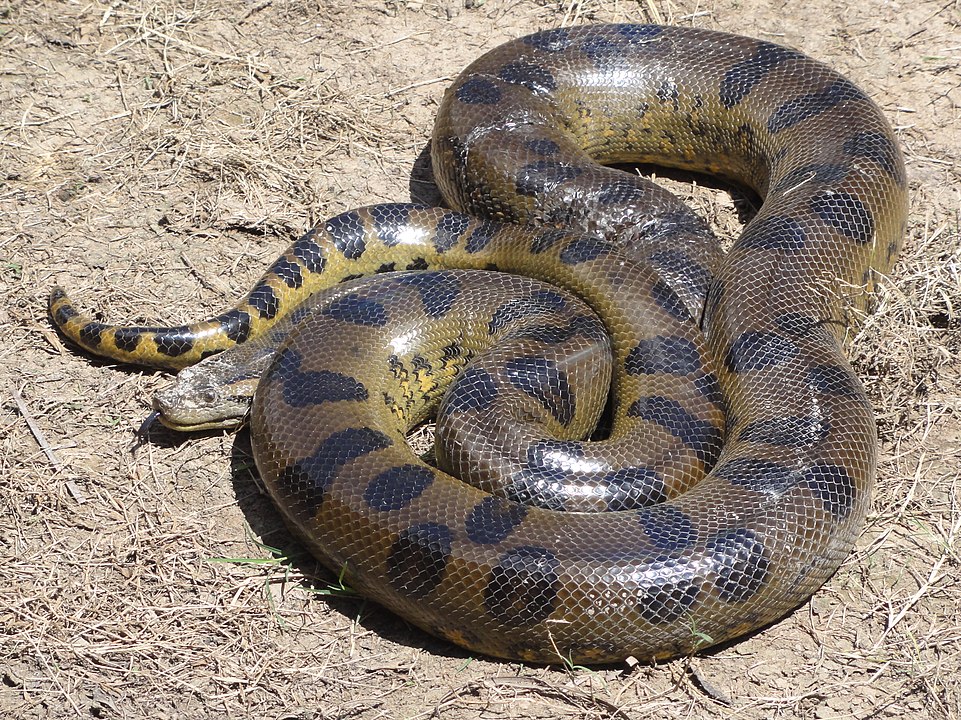
It is the most feared constrictor snake in the world. With an average length of 6 to 9 meters (20 to 30 feets), it is smaller than the python, but its weight exceeding 250 kg and a diameter greater than 12 inches (30.5 centimeters) make it the largest snake on the planet. The anaconda inhabits the waters of South America and has only three predators: the jaguar, the black caiman, and humans. Wrapped around its prey, it tightens its grip with a force of 2 kg per square centimeter every time the victim exhales!
It can also take its prey underwater to drown it once it has sunk its fangs into its flesh. An anaconda can swallow a whole animal the size of a goat or a dog. However, even though it is theoretically capable of killing and consuming a human, such attacks are rare.
- The heaviest snake globally, with some individuals weighing over 550 pounds (250 kg).
- Olive-green coloration and aquatic lifestyle, residing in swamps and slow-moving rivers of South America.
Mojave Rattlesnake (Crotalus Scutulatus)
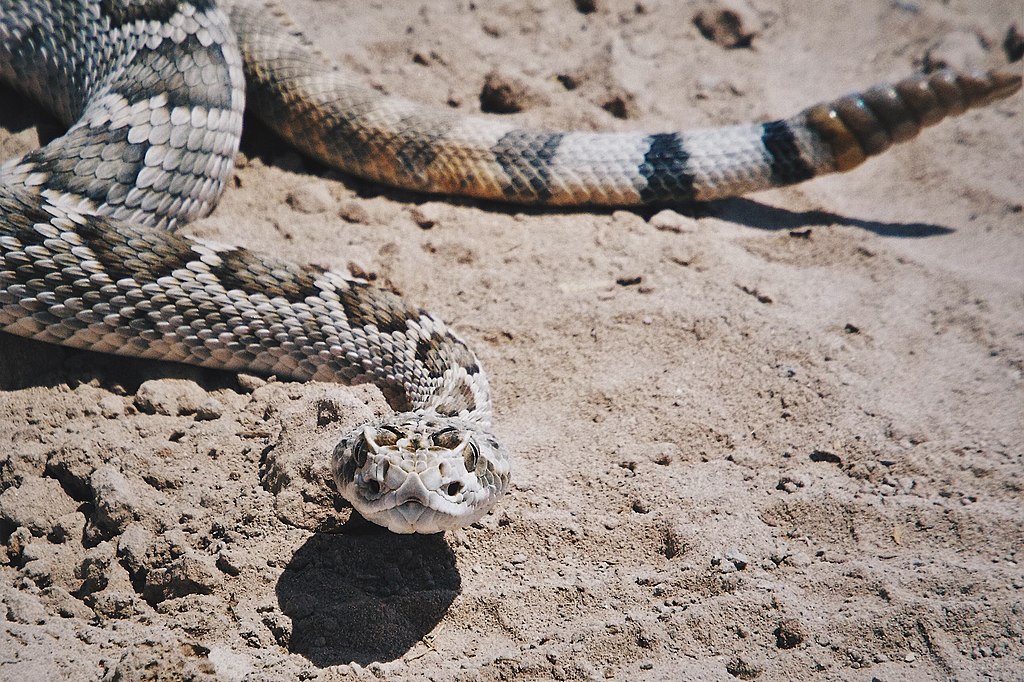
A highly venomous rattlesnake, it inhabits the desert regions of the southwestern United States and central Mexico. Scientists regard it as having the most toxic venom of all rattlesnake species, consisting of hemotoxic and neurotoxic components. It averages about 100 cm (3.3 feet) in length, yet its venom is deadly.
Mojave rattlesnake bites often exhibit delayed symptoms, leading individuals to underestimate their severity. However, the venom’s effects manifest within hours, causing vision problems, speech and swallowing difficulties, muscle weakness, and respiratory failure. Remarkably, as little as 70 mg of its venom can kill 7,500 mice.
- Notable for its potent venom containing neurotoxins.
- Range across the American Southwest and northern Mexico.
- Recognizable by its light and dark diamond-shaped patterns.
- Maximum recorded total length of 137.3 cm (4.50 ft).
King Cobra (Ophiophagus Hannah)
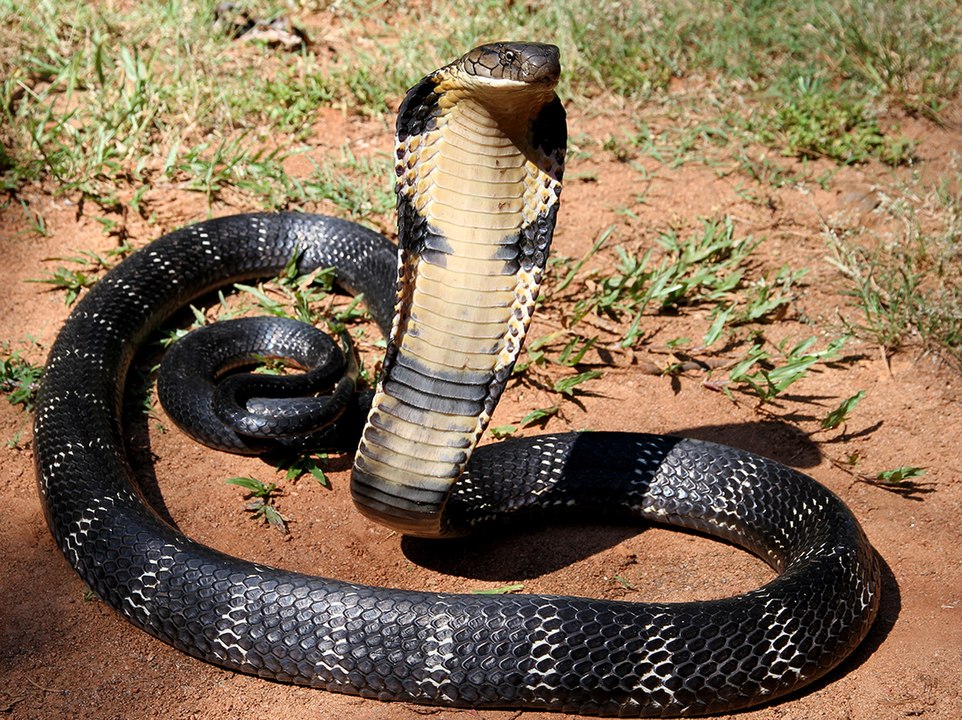
It can reach up to 5.5 meters (18 feet) in length and weigh as much as 10 kilograms, making it the largest venomous snake in the world. Although its venom may not be the most potent, each bite can deliver up to 500 mg of venom, rendering it one of the most perilous snakes globally. Theoretically, a single cobra bite contains enough venom to kill a 600-kilogram animal or around twenty people.
The venom consists of a neurotoxin that directly affects the victim’s body, leading to the paralysis of the neuromuscular and respiratory systems. In contrast to the Mojave rattlesnake, symptoms appear rapidly, and death ensues swiftly. Moreover, certain cobra species possess the ability to spit their venom up to a distance of 3 meters, causing severe eye damage.
- World’s longest venomous snake, capable of reaching 18 feet (5.5 meters).
- Found in Southeast Asia, known for its distinctive hood and highly potent venom.
Russell’s Viper (Daboia Russelii)
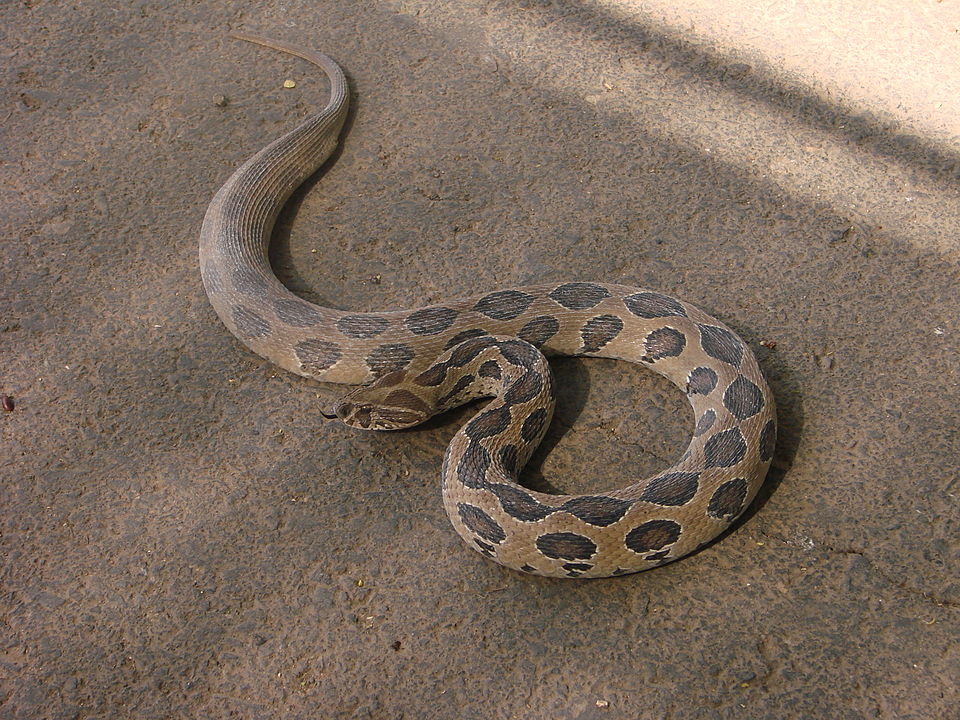
This snake is responsible for more deadly envenomations than any other snake. Primarily found in Southeast Asia, China, Taiwan, and India, this species is considered the most dangerous viper and a leading cause of death. These deadly snakes can reach a length of 1.2 (3.95 feet) to 1.6 meters (5.2 feet) and produce a substantial amount of venom.
Symptoms of a Russell’s viper bite include excessive bleeding, especially from the gums and in the urine, a rapid drop in blood pressure and heart rate, necrosis, and kidney failure. About 29% of survivors also suffer from brain damage.
- Venomous snake native to South Asia.
- Identifiable by a triangular-shaped head and dark zigzag bands on its body.
- Responsible for numerous snakebite incidents in its range.
Hydrophis Belcheri (Faint-Banded Sea Snake or Belcher’s Sea Snake)
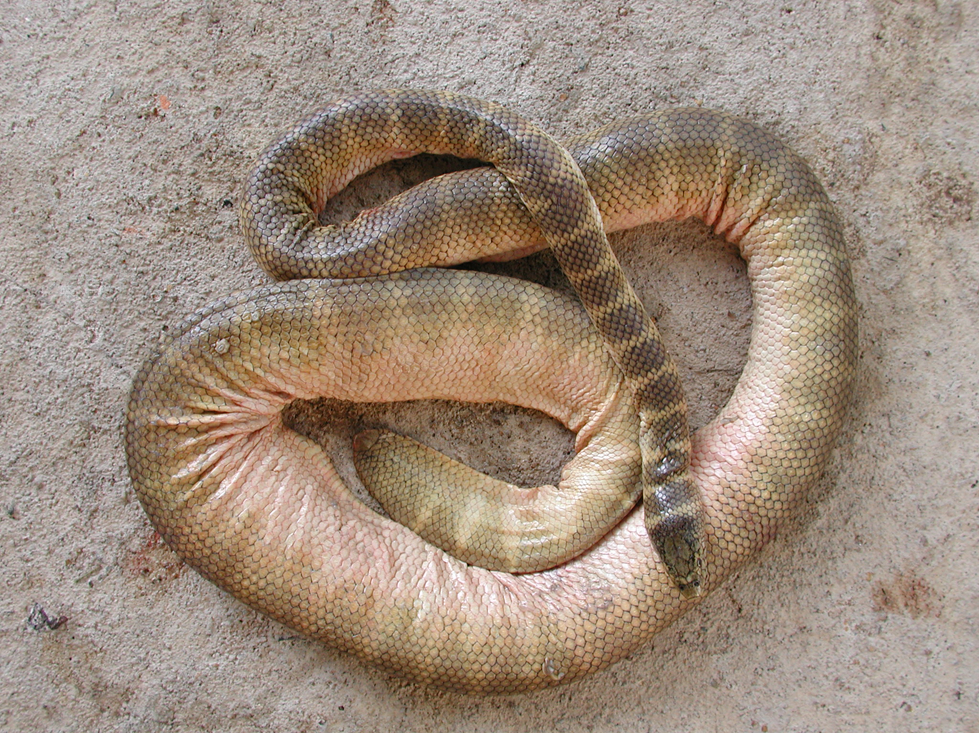
Extremely venomous, it can be encountered in the seas of South Asia. Relatively small (about 1 meter in length) and slender, this snake is so venomous that a single bite can kill a person in less than 45 minutes. Immediate treatment is essential for survival. Fortunately, its timid nature mostly spares humans from its attacks.
Its venom contains high levels of neurotoxins and myotoxins. While its effects on humans are still under study, vomiting, dizziness, seizures, severe bleeding, respiratory and renal failure, and total paralysis are not out of the question.
- Sea snake inhabiting the Indo-Pacific oceans.
- Characterized by its narrow body and faint bands.
- Highly adapted for aquatic life, possessing venom primarily used for hunting.
Eastern Brown Snake (Pseudonaja Textilis)
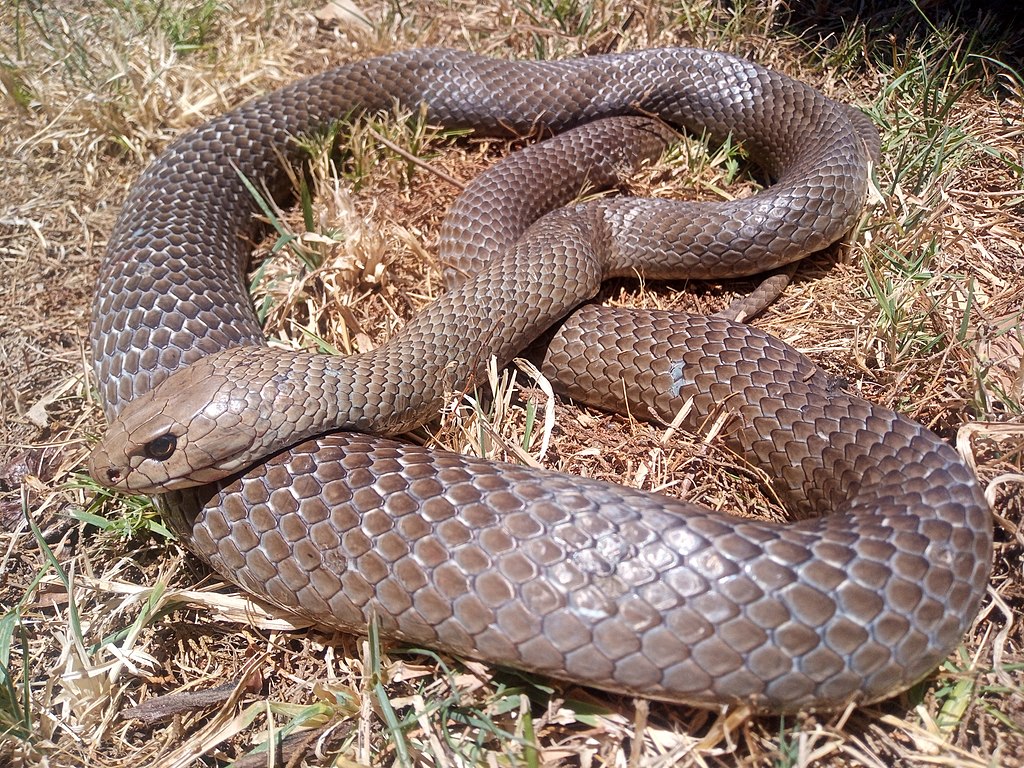
The Eastern Brown Snake can mainly be observed in Australia and New Guinea, in agricultural lands and on the outskirts of urban areas, where its favorite prey, the house mouse, likes to roam. This slender snake averages 1.5 meters in length and mostly strikes at the thighs of its human victims. It is responsible for about 60% of snakebite-related deaths in humans in Australia.
When it’s about to attack, its body forms an “S” shape, and it opens its mouth wide. Its venom affects the blood system, causing coagulopathies, hemorrhages, and even cardiac arrests. No human can resist its venom for more than thirty minutes. They are very fast, capable of surpassing a running human, according to experts.
- One of the world’s most venomous snakes.
- Indigenous to Australia, typically brown with a slender build.
- Often found in various habitats, including urban areas.
Common Death Adder (Acanthophis Antarcticus)
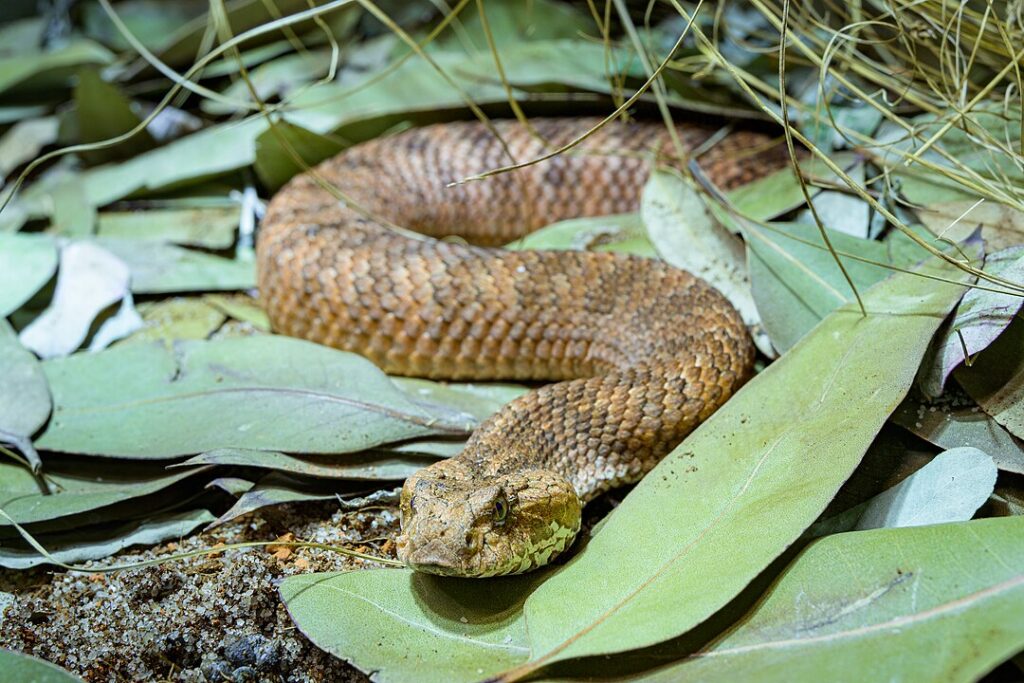
Despite its viper-like appearance, it belongs to the elapid snake family, which includes cobras and black mambas. This snake hides under decomposing foliage during the day, and at twilight, it comes out to hunt lizards, rodents, and birds. It uses the tip of its tail as a lure, waving it slowly to attract prey.
This viper can strike and inject venom into its prey in less than 0.15 seconds. It delivers a neurotoxic venom, which induces paralysis and complete respiratory failure. Despite the development of antivenoms, deaths still occur, demonstrating the potency of their strike.
- Endemic to Australia, known for its deadly venom.
- Recognizable by its short, stout body and triangular head.
- Employ an ambush hunting strategy.
Inland Taipan (Oxyuranus Microlepidotus)
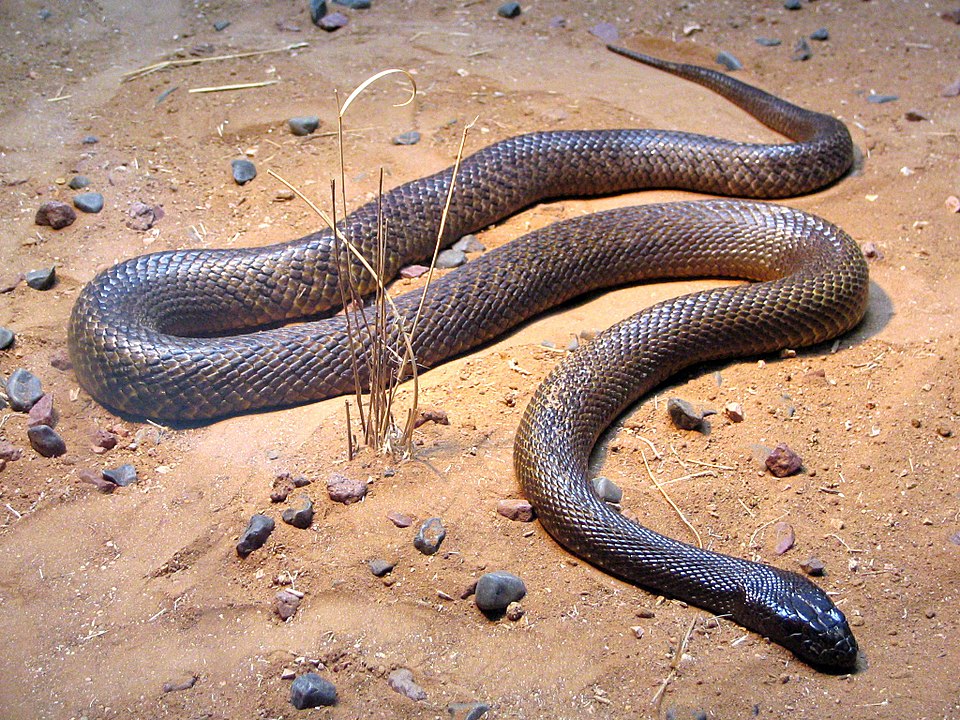
A dark, round head, 23 rows of dorsal scales along the body, and 5mm fangs—quite reassuring, right? As its name suggests, it exclusively inhabits deserts and arid regions and is endemic to Australia (South Australia, Queensland, and the Northern Territory). A dose of its venom can kill 100 men or 250,000 mice.
The effects, once again, include paralysis of the nervous system, blood clotting, and cardiac issues. Its skin color changes throughout the year to adapt to temperatures (light in summer, darker in winter). Its only predators are the mulga snake and the perentie monitor, both immune to its venom.
- Dubbed the “Fierce Snake,” it possesses the most toxic venom of any snake.
- Resides in the arid regions of Australia.
- Camouflaged appearance, with scales matching its environment.
Black Mamba (Dendroaspis Polylepis)
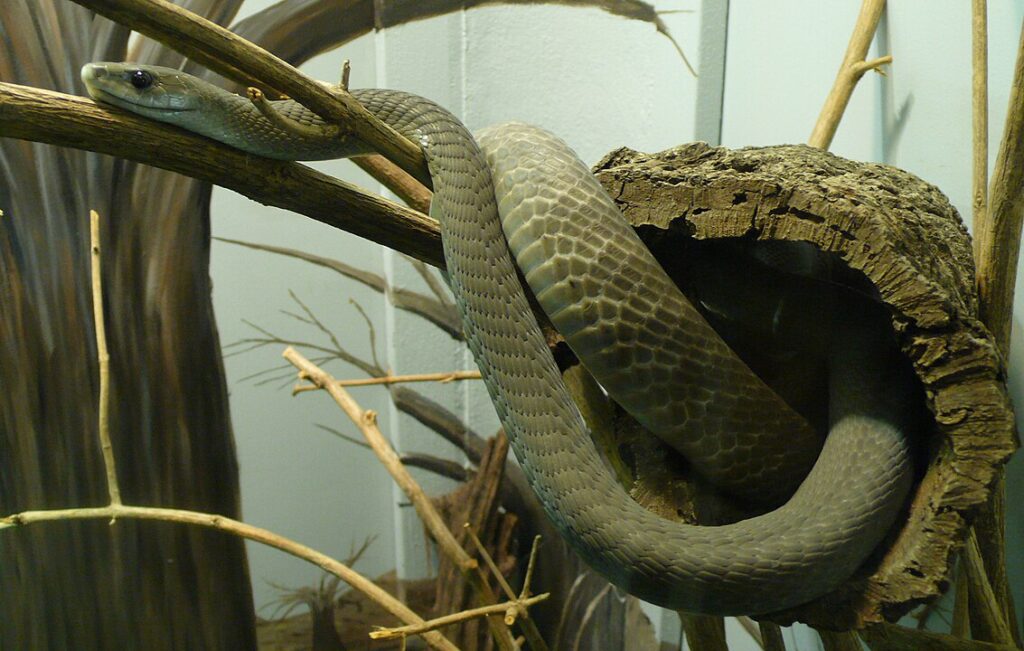
At 23 km/h, this snake has a top speed higher than the majority of humans. Originating from Africa, it can reach up to 3 meters and skillfully climb trees. Its skin ranges from olive gray to metallic brown and gets its name from the blackish color inside its mouth, the only part of its body with such a hue.
Unlike other snakes, the black mamba delivers multiple bites when it attacks. Its venom induces symptoms within just 10 minutes, including severe tingling, a metallic taste in the mouth, neurological dysfunction, blurred vision, respiratory paralysis, and an inability to speak. Humans bitten by a black mamba are completely paralyzed within 45 minutes, making it the most feared snake in the world.
- Named for the dark coloration inside its mouth, not its skin.
- Native to sub-Saharan Africa and known for its incredible speed.
- Highly venomous, making it one of the continent’s most feared snakes.
There are several myths and misconceptions about snake strength, often portraying them as excessively dangerous or aggressive. In reality, snakes primarily use their strength for hunting and defense, and most snake species are not a threat to humans when left undisturbed in their natural habitat.


